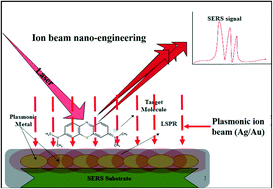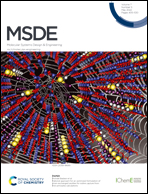Ion beam nanoengineering of surfaces for molecular detection using surface enhanced Raman scattering
Abstract
Ion beam nanoengineering of surfaces is a promising way to tailor the surface properties for a variety of technological applications. One of the unique applications of ion beam methods is to synthesize embedded nanostructures at the nearby surface region of a variety of materials. This is an excellent means of controlling the concentration of dopant elements and their space localization. In addition, it modifies the surface properties without introducing any chemical contamination and affecting the bulk properties of the materials. In recent years, it has emerged as a promising technique for surface modification resulting in improved surface enhanced Raman scattering (SERS) sensitivity and selectivity for molecular detection at an ultralow level in the environment and biomedical research. Ion beam methods such as implantation (Au/Ag ions) and irradiation engineer the surface by synthesizing and tailoring embedded plasmonic nanostructures within the surface region, respectively. In this minireview, the role of low energy ion implantation and irradiation in engineering surfaces of a variety of materials has been discussed for potential applications in the ultrasensitive SERS molecular detection and identification of chemical and biological species. Furthermore, recent results based on noble metal (Au/Ag) ion implantation or irradiation (Ar, Ne, molecular ions, etc.) induced engineered surfaces with emphasis on tailoring the surface and optical properties for ultrasensitive SERS molecular detection are addressed followed by present challenges and future outlook.

- This article is part of the themed collection: MSDE Recent HOT Articles


 Please wait while we load your content...
Please wait while we load your content...